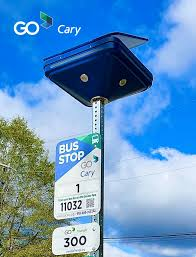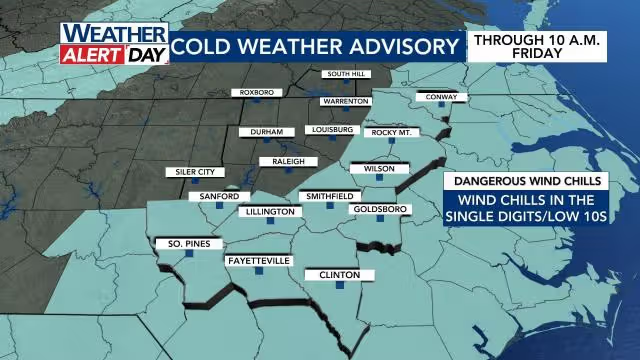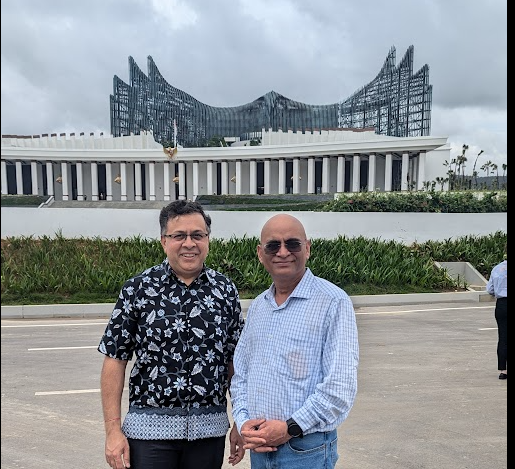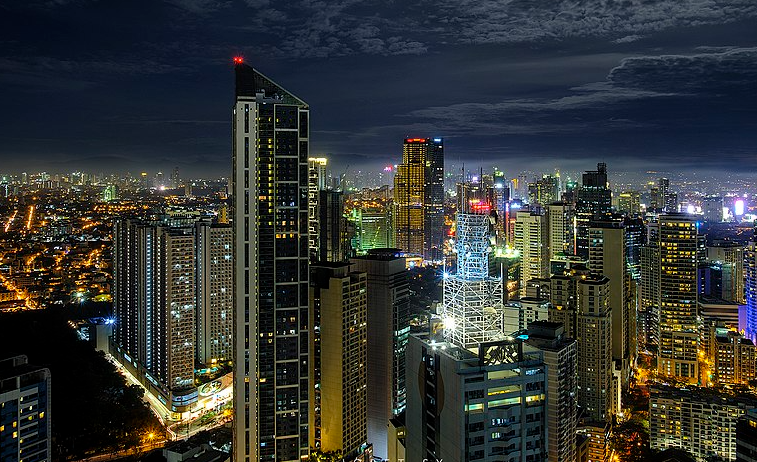Smart cities are more than just interconnected devices; they are living, breathing ecosystems designed to improve the quality of life for their citizens. And at the heart of any thriving city lies its transportation network. Smart transportation systems are revolutionizing urban mobility, making it safer, more efficient, and more sustainable. This includes not only personal vehicles but also mass transit systems that serve a vital role in urban centers. Why Smart Transportation Matters Reduced Congestion: Traffic jams are a major source of frustration and lost productivity. Smart traffic management systems, powered by real-time data from IoT sensors and cameras, can dynamically adjust traffic flow, optimize routes, and reduce congestion. Enhanced Safety: Smart transportation incorporates advanced safety features such as connected vehicle technology, which allows vehicles to communicate with each other and with infrastructure to prevent accidents. Predictive maintenance systems can also identify potential safety hazards before they lead to breakdowns or accidents. Improved Sustainability: Electric vehicles, optimized routing, and reduced idling contribute to lower emissions and a smaller carbon footprint. Smart transportation systems can also promote the use of public transportation and shared mobility options, further reducing reliance on personal vehicles. Increased Efficiency: Real-time information on traffic conditions, public transportation schedules, and parking availability empowers citizens to make informed decisions about their travel plans, saving time and reducing stress. Bus Stop Queue [Freepik www.freepik.com] Key Components of Smart Transportation IoT Sensors: These devices collect data on traffic flow, parking occupancy, air quality, and other key metrics, providing a comprehensive picture of the urban environment. Smart Traffic Management Systems: These systems use data analytics and algorithms to optimize traffic signal timing, manage incidents, and provide real-time traffic information to drivers. Connected Vehicles: Vehicles equipped with sensors and communication technology can exchange information with each other and with infrastructure, enabling features such as adaptive cruise control, lane departure warning, and automatic emergency braking. Electric Vehicle Infrastructure: A network of charging stations is essential to support the widespread adoption of electric vehicles. Smart charging systems can optimize charging schedules to minimize grid impact and reduce energy costs. E-Governance Platforms: Citizens can use mobile apps and online portals to access transportation information, pay for parking, report issues, and provide feedback to city officials. Mass Transit Integration Mass transit is a critical component of smart transportation, offering high-capacity, efficient, and sustainable mobility options within urban areas. Integrating mass transit into a smart city framework involves several key strategies: Real-Time Information Systems: Providing passengers with real-time information on bus and train arrival and departure times, potential delays, and service disruptions enhances the overall transit experience. Digital displays at bus stops and mobile apps can deliver this information directly to riders. Integrated Payment Systems: Smart fare payment systems, such as mobile ticketing and contactless payment options, streamline the boarding process and improve efficiency. Optimized Routing and Scheduling: Data analytics and AI algorithms can be used to optimize bus and train routes and schedules based on passenger demand and traffic conditions. This ensures that transit services are aligned with the needs of the community and are operating at peak efficiency. Enhancing Public Safety at Mass Transit Stops Ensuring the safety and security of passengers at mass transit stops is paramount. Several smart city technologies can be deployed to enhance public safety: Smart Lighting: Adequate lighting is essential for creating a safe and secure environment at bus stops and transit stations. Smart LED lights can be equipped with sensors that automatically adjust brightness based on ambient light levels and pedestrian activity, improving visibility and deterring crime. Surveillance Systems: Security cameras can be strategically placed at transit stops to monitor activity and deter criminal behavior. Real-time video feeds can be monitored by transit authorities and law enforcement, allowing for rapid response to incidents. Emergency Communication Systems: Installing emergency call boxes or buttons at transit stops provides passengers with a direct line to transit authorities or emergency services. These systems can be particularly valuable in isolated or high-crime areas. Protective Barriers: Metro in Los Angeles has finalized the installation of protective barriers on its entire bus fleet to protect drivers from physical attacks. These barriers, made of shatterproof, tempered glass, have been shown to reduce assaults on bus operators by 58%. Examples in Action GoTriangle (North Carolina): GoTriangle uses a Rider App to allow passengers to track buses in real time and provides service alerts via its website and social media channels. The agency also has an adverse weather plan to maintain the well-being of riders and employees during inclement weather. Los Angeles Metro: Metro has equipped its entire bus fleet with protective barriers for drivers to reduce assaults. The agency has also added onboard cameras, digital video recorders, and emergency buttons that operators can use to call for help. Miami-Dade Transit: Miami-Dade Transit integrates various smart technologies to improve public transport. SELS: Smart Era Lighting has been designing and building smart, solar powered LED lights and bus stops. Agencies around the US are using these to provide an illuminated location for passengers. The Road Ahead Smart transportation is not just about technology; it’s about creating a more livable, sustainable, and equitable future for our cities. By embracing innovation and working together, we can transform our transportation networks, including mass transit systems, into engines of economic growth and social progress. The Smart Transport Symposium, and similar events, are crucial for fostering these discussions and driving innovation forward. Smart Mobility Symposium Varidx is organizing a Smart Transport symposium on April 17 with transportation leaders from the Triangle. In Partnership with: 📅 Date: April 17, 2025 ⏰ Time: 3-5 PM 📍 Location: Central Pines Regional Council, 4307 Emperor Blvd, Suites 110, Durham, NC 2770 Register Now!
Smart cities are more than just interconnected devices; they are living, breathing ecosystems designed to improve the quality of life for their citizens. And at the heart of any thriving city lies its transportation network. Smart transportation systems are revolutionizing urban mobility, making it safer, more efficient, and more sustainable. This includes not only personal vehicles but also mass transit systems that serve a vital role in urban centers.
Why Smart Transportation Matters
- Reduced Congestion: Traffic jams are a major source of frustration and lost productivity. Smart traffic management systems, powered by real-time data from IoT sensors and cameras, can dynamically adjust traffic flow, optimize routes, and reduce congestion.
- Enhanced Safety: Smart transportation incorporates advanced safety features such as connected vehicle technology, which allows vehicles to communicate with each other and with infrastructure to prevent accidents. Predictive maintenance systems can also identify potential safety hazards before they lead to breakdowns or accidents.
- Improved Sustainability: Electric vehicles, optimized routing, and reduced idling contribute to lower emissions and a smaller carbon footprint. Smart transportation systems can also promote the use of public transportation and shared mobility options, further reducing reliance on personal vehicles.
- Increased Efficiency: Real-time information on traffic conditions, public transportation schedules, and parking availability empowers citizens to make informed decisions about their travel plans, saving time and reducing stress.
Bus Stop Queue [Freepik www.freepik.com]
Key Components of Smart Transportation
- IoT Sensors: These devices collect data on traffic flow, parking occupancy, air quality, and other key metrics, providing a comprehensive picture of the urban environment.
- Smart Traffic Management Systems: These systems use data analytics and algorithms to optimize traffic signal timing, manage incidents, and provide real-time traffic information to drivers.
- Connected Vehicles: Vehicles equipped with sensors and communication technology can exchange information with each other and with infrastructure, enabling features such as adaptive cruise control, lane departure warning, and automatic emergency braking.
- Electric Vehicle Infrastructure: A network of charging stations is essential to support the widespread adoption of electric vehicles. Smart charging systems can optimize charging schedules to minimize grid impact and reduce energy costs.
- E-Governance Platforms: Citizens can use mobile apps and online portals to access transportation information, pay for parking, report issues, and provide feedback to city officials.
Mass Transit Integration
Mass transit is a critical component of smart transportation, offering high-capacity, efficient, and sustainable mobility options within urban areas. Integrating mass transit into a smart city framework involves several key strategies:
- Real-Time Information Systems: Providing passengers with real-time information on bus and train arrival and departure times, potential delays, and service disruptions enhances the overall transit experience. Digital displays at bus stops and mobile apps can deliver this information directly to riders.
- Integrated Payment Systems: Smart fare payment systems, such as mobile ticketing and contactless payment options, streamline the boarding process and improve efficiency.
- Optimized Routing and Scheduling: Data analytics and AI algorithms can be used to optimize bus and train routes and schedules based on passenger demand and traffic conditions. This ensures that transit services are aligned with the needs of the community and are operating at peak efficiency.
Enhancing Public Safety at Mass Transit Stops
Ensuring the safety and security of passengers at mass transit stops is paramount. Several smart city technologies can be deployed to enhance public safety:
- Smart Lighting: Adequate lighting is essential for creating a safe and secure environment at bus stops and transit stations. Smart LED lights can be equipped with sensors that automatically adjust brightness based on ambient light levels and pedestrian activity, improving visibility and deterring crime.
- Surveillance Systems: Security cameras can be strategically placed at transit stops to monitor activity and deter criminal behavior. Real-time video feeds can be monitored by transit authorities and law enforcement, allowing for rapid response to incidents.
- Emergency Communication Systems: Installing emergency call boxes or buttons at transit stops provides passengers with a direct line to transit authorities or emergency services. These systems can be particularly valuable in isolated or high-crime areas.
- Protective Barriers: Metro in Los Angeles has finalized the installation of protective barriers on its entire bus fleet to protect drivers from physical attacks. These barriers, made of shatterproof, tempered glass, have been shown to reduce assaults on bus operators by 58%.
Examples in Action
- GoTriangle (North Carolina): GoTriangle uses a Rider App to allow passengers to track buses in real time and provides service alerts via its website and social media channels. The agency also has an adverse weather plan to maintain the well-being of riders and employees during inclement weather.
- Los Angeles Metro: Metro has equipped its entire bus fleet with protective barriers for drivers to reduce assaults. The agency has also added onboard cameras, digital video recorders, and emergency buttons that operators can use to call for help.
- Miami-Dade Transit: Miami-Dade Transit integrates various smart technologies to improve public transport.
- SELS: Smart Era Lighting has been designing and building smart, solar powered LED lights and bus stops. Agencies around the US are using these to provide an illuminated location for passengers.

The Road Ahead
Smart transportation is not just about technology; it’s about creating a more livable, sustainable, and equitable future for our cities. By embracing innovation and working together, we can transform our transportation networks, including mass transit systems, into engines of economic growth and social progress. The Smart Transport Symposium, and similar events, are crucial for fostering these discussions and driving innovation forward.
Smart Mobility Symposium
📅 Date: April 17, 2025
⏰ Time: 3-5 PM
📍 Location: Central Pines Regional Council, 4307 Emperor Blvd, Suites 110, Durham, NC 2770
The snowfall in Research Triangle Park (RTP), NC, over the past two days has left residents grappling with a common winter challenge: determining whether roads are safe to drive. Social media is abuzz with questions about road conditions, and while television news provides updates on accidents and snowfall totals, there remains a gap in localized, actionable road safety information. This blog explores how smart city technologies can bridge this gap, ensuring safer commutes during winter weather. The Problem: Lack of Real-Time Road Condition Updates Despite advancements in weather forecasting and traffic reporting, residents often lack reliable, real-time updates on road conditions specific to their routes. Key issues include: No Centralized Source: Drivers cannot easily access detailed reports about specific streets or highways between their homes and workplaces. Forced Travel: Many are compelled to drive to work without clear advisories, increasing the risk of accidents. Underutilized Infrastructure: RTP has a network of road-monitoring cameras that could provide valuable insights but are not fully leveraged for public reporting. The Smart City Solution Smart city technologies offer innovative ways to monitor and report road conditions during winter weather. Here’s how: Leveraging Road Cameras with AI: Existing traffic cameras can be equipped with video analytics software to assess road conditions in real-time. AI algorithms can detect snow, ice, slush, or clear roads by analyzing visual data from these cameras. This data can then be integrated into platforms like Google Maps or dedicated apps to provide live updates for drivers. IoT Sensors Embedded in Roads: Smart sensors embedded within roadways can measure surface temperature, detect ice formation, and report snow accumulation. These sensors act as “eyes on the ground,” feeding critical data to control centers. When combined with predictive AI systems, cities can proactively deploy snowplows or activate heating systems embedded in roads to prevent hazardous conditions. Public Accessibility via Apps: A dedicated app could provide drivers with real-time updates on road conditions along their planned routes. Features might include: Alerts for icy patches or snow-covered roads. Recommendations for alternative routes. Integration with navigation tools like Google Maps for seamless travel planning. Benefits of Implementing Smart Winter Road Monitoring Enhanced Safety: Real-time updates reduce accidents by helping drivers make informed decisions. Efficient Resource Allocation: Data-driven insights allow cities to deploy plows and salt trucks where they are most needed. Improved Public Trust: Transparent reporting fosters confidence among residents during adverse weather conditions. A Call to Action for RTP To address the challenges posed by winter weather, RTP should consider investing in smart city technologies that leverage its existing infrastructure. By integrating AI-powered video analytics, IoT sensors, and user-friendly apps, the region can transform its approach to winter road safety. Residents deserve better tools to navigate snowy roads safely. With smart city innovations already available, it’s time for RTP to lead the way in modernizing winter travel solutions. By adopting these strategies, RTP can ensure that no resident is left guessing about road safety after a snowfall.
Imagine a future where urban living is seamlessly integrated with technology, making our cities more efficient, sustainable, and livable. Welcome to our exploration of innovative urban solutions observed during our recent visit to Southeast Asia. The cities of Manila Metro, Jakarta, Nusantara, and Badung are at the forefront of smart city development, implementing cutting-edge technologies and strategies to enhance urban living. This post highlights ten remarkable initiatives that not only address pressing urban challenges but also serve as valuable examples for cities around the world. Join us as we delve into these transformative ideas that are shaping the future of urban environments. 1. Jakarta’s Smart Mobility Revolution Jakarta’s smart mobility initiative is transforming the city’s notorious traffic. AI-powered traffic lights adjust in real-time to traffic flow, reducing congestion and commute times. The city has also launched a bike-sharing system and a real-time public transport tracking app, making it easier for residents to choose eco-friendly transportation options. This holistic approach is not just easing traffic; it’s also reducing the city’s carbon footprint. 2. JAKI: Jakarta’s Super App The JAKI app is Jakarta’s digital Swiss Army knife. It allows residents to report city issues, book public services, and even register marriages online. During the pandemic, it became a crucial tool for COVID-19 information and vaccination bookings. The app’s success lies in its user-friendly interface and constant updates based on citizen feedback, making it a model for other cities looking to digitize their services. 3. Badung’s Command Center: Mission Control for Cities Badung’s Command Center is the nerve center of the city’s smart operations. It integrates data from various sources, including traffic cameras, weather stations, and emergency services, to provide real-time insights and facilitate quick decision-making. The center has been particularly effective in managing natural disasters, coordinating responses to floods and landslides with unprecedented efficiency. 4. Bali ASECH: Digital Ecosystem on Steroids The ASECH (ASEAN Smart Cities and Economic Hub) in Bali is more than just an innovation center; it’s a catalyst for regional cooperation. It hosts regular hackathons and smart city challenges, bringing together minds from across Southeast Asia. The center has already incubated several successful startups focusing on urban solutions, from smart agriculture to AI-powered tourism services. 5. Manila’s Smart City Swagger Manila’s recent smart city award from the International Data Corporation (IDC) recognizes its innovative approach to urban challenges. The city has implemented a smart flood control system that uses IoT sensors to predict and manage flooding. Additionally, Manila’s shift to digital payments for government services has significantly reduced corruption and improved efficiency, setting a benchmark for other cities in the region. 6. Nusantara: The Green Dream Nusantara, Indonesia’s planned new capital, is designed with sustainability at its core. The Nusantara Capital City (IKN) will help Indonesia achieve its target of becoming a developed country by 2045, as outlined in the Indonesia 2045 Vision. Beyond the impressive 70% green space allocation, the city plans to use autonomous electric vehicles for public transport and implement a smart grid system for efficient energy distribution. Nusantara’s ambitious plans serve as a living laboratory for sustainable urban development practices. We saw these small truck size boxes converting humidity in the air to drinking water. 7. Badung’s Trash Talk Badung’s smart waste management system is revolutionizing how the city handles refuse. AI-powered sorting facilities can identify and separate different types of waste with high accuracy, significantly improving recycling rates. The system also includes smart bins that compact waste and signal when they need emptying, optimizing collection routes and reducing the carbon footprint of waste management vehicles. 8. Manila’s Data-Driven Decisions Metro Manila’s embrace of data analytics is reshaping urban governance. The city uses predictive analytics to anticipate crime hotspots, allowing for more efficient police deployment. In education, data analysis has helped identify at-risk students, enabling early intervention programs. This data-driven approach is not just improving services; it’s also increasing trust in local government by making decision-making processes more transparent. 9. Jakarta’s Safety Net Jakarta’s smart surveillance system goes beyond just cameras. It incorporates AI-powered facial recognition and behavior analysis to detect potential security threats. However, the city has also implemented strict data protection policies to address privacy concerns. The system has not only improved public safety but also aided in disaster management, helping to coordinate evacuations during flooding events. More on our Jakarta visit here. 10. Nusantara’s Inclusive Future Nusantara’s commitment to inclusivity is evident in its urban planning. The city is designing accessible public spaces and implementing universal design principles in its infrastructure. The plan calls for keeping more than 60% of the city green – trees, trails, greenways. Nusantara plans to offer free coding and digital literacy classes to ensure all residents can benefit from and contribute to the city’s smart initiatives. This approach could set a new standard for social equity in smart city development. These innovations show how Southeast Asian cities are leading the way in urban transformations. They’re not just implementing cool tech; they’re addressing real urban challenges and improving quality of life for their residents. These examples are great use cases for cities around the world adapting and implementing similar solutions to create smarter, more livable urban environments. A recent Ipsos Predictions Survey 2025 – shows level of optimism in each country. How much do you think Smart City conveniences contribute to the high levels of optimism in Philippines and Indonesia? Got any thoughts on these innovations? Drop a comment below! And hey, maybe your city will be the next smart city superstar! Ready to be part of the urban revolution? Book a demo with Varidx today and discover how our cutting-edge technologies can transform your city!
Explore Manila’s Smart City Revolution: Innovations for a Sustainable Future Welcome to the Varidx Blog! Join us on an exciting journey through the bustling metropolis of Manila, where innovation meets tradition in the heart of the Philippines. Smart City Initiatives: Paving the Way for a Brighter Future Pioneering Projects Our visit to Manila was part of the U.S. Trade Mission focused on Innovative Technologies for Urban Infrastructure Development. This event brought together American companies and local leaders from various cities, including Makati. During the mission, mayors from different parts of Manila shared their projects and ideas. It was inspiring to hear about their efforts to make their cities smarter and more livable. The discussions highlighted how important it is for cities around the world to work together and learn from each other. The trade mission was a great opportunity to explore how U.S. technologies could help support Manila’s goals for urban development. It reminded us that collaboration is key when it comes to tackling challenges in our cities. As we stepped off the plane into the warm, tropical air of Manila, we could feel the energy of a city poised for change. Our recent visit as part of the U.S. Trade Mission for Innovative Technologies for Urban Infrastructure Development opened our eyes to the incredible potential of this vibrant capital. Metro Manila is leading the charge in the Philippines’ Digital Transformation. Cities in the National Capital Region and outside, including —Makati, Muntinlupa, Caloocan, Pasig, and Quezon City , Cebu, Davao, and Clark—are trailblazing the path towards a smarter, more connected urban landscape. These cities are part of an ambitious plan to transform 80 Philippine cities into smart and sustainable communities by 2028. Technology at the Heart of Change Walking through the streets of Manila, we witnessed firsthand how technology is reshaping urban life. From smart traffic management systems to innovative waste disposal solutions, the city is embracing cutting-edge technologies to enhance various aspects of urban living. According to the Makati City Mayor Mar-Len Abigail Binay, the city uses data analytics to track Air Quality, Water and population health. CCTV Cameras are used for surveillance. Deploying several hundred Disaster Risk Reduction Management (DRRM) vehicles earned Makati a nomination to finalist for World Smart Cities Awards. Technology is in the city Mission: “The Makati City Government will be the model for world-class local governance: providing for the well-being of its citizenry through delivery of the highest level of basic, social, and economic services with breakthrough technologies, sustainable financing, and competent, responsible and professional civil servants” Collaboration: The Key to Success What struck us most was the spirit of collaboration driving Manila’s smart city initiatives. Government agencies, local authorities, and international partners are working hand in hand to bring this vision to life. The U.S. Trade Mission’s involvement underscores the global interest in Manila’s transformation. Sustainability: More Than Just a Buzzword Manila’s commitment to sustainability is evident in every corner of the city. From green spaces sprouting amidst concrete jungles to eco-friendly public transportation options, the city is taking concrete steps towards a greener future. Davo – Plastic Smart City The Plastic Smart Cities initiative in Davao City, implemented by WWF, focuses on reducing plastic pollution through innovative waste management solutions. Davao City, known for its rich cultural heritage and the annual Kadayawan festival, faces challenges in waste collection, especially in remote barangays. The initiative targets three types of barangays: high-end, Ru-Ban (rural-urban), and low-income. Key interventions include providing plastic shredders, supporting women’s organizations in waste segregation and upcycling, and establishing community gardens. Notable projects include the Toril Kamlabuan Association’s upcycling efforts and the Women’s Bright refilling station. These efforts aim to enhance waste management, promote sustainability, and reduce plastic pollution in Davao’s diverse communities. A City That Cares Perhaps the most heartening aspect of Manila’s smart city initiatives is the focus on improving the lives of its residents. Enhanced public services, powered by data analytics and smart technologies, are making government more responsive and efficient. The Road Ahead As we bid farewell to Manila, we left with a sense of excitement for what the future holds. The city’s smart initiatives are not just about technology—they’re about creating a more livable, sustainable, and prosperous urban environment for all. Experience the Future with Varidx Are you inspired by Manila’s journey towards becoming a smart city? At Varidx, we’re at the forefront of urban innovation, developing solutions that can help cities like Manila realize their smart city dreams. Ready to be part of the urban revolution? Book a demo with Varidx today and discover how our cutting-edge technologies can transform your city!
Exploring Jakarta’s Smart City Vision: A First-Hand Experience Walking through Jakarta’s bustling streets last week, I witnessed firsthand how technology is reshaping this vibrant metropolis. The city’s smart transformation isn’t just about flashy tech – it’s about making life better for its 10+ million residents. Discover how Jakarta’s Smart City 4.0 initiative transforms urban living through digital innovation, smart mobility, and citizen-centric technology. Learn from their successful implementation During our recent visit to Jakarta, we got an up-close look at how this dynamic city is embracing the future. The transformation is remarkable, and it goes far beyond what you might expect from a smart city initiative. The Heart of Jakarta’s Smart Vision Imagine a city where your morning commute is optimized in real-time, where urban farming flourishes between skyscrapers, and where getting married doesn’t mean endless queues at government offices. This isn’t science fiction – it’s today’s Jakarta. Four Pillars Driving Change Smart Synergy: It’s heartening to see how Jakarta’s sandbox initiative brings everyone to the table – from tech-savvy teenagers to elderly community leaders, all contributing to better city services. Mobile First: The JAKI super-app is more than just another city app. It’s become the digital Swiss Army knife for Jakartans, handling everything from bill payments to community forums. System and Data Driven: Behind the scenes, artificial intelligence crunches massive amounts of data, helping city leaders make better decisions for their communities. Digital Experience: What stands out is how inclusive the digital services are – designed for everyone, from tech experts to digital newcomers. Smart Mobility: Transforming Jakarta’s Transportation Jakarta’s smart mobility initiative is revolutionizing how millions move through the city daily. The integration of MRT, LRT, TransJakarta BRT, and other public transport systems through smart ticketing and real-time monitoring has significantly improved commuter experiences. Jakarta’s smart mobility transformation is anchored by TransJakarta, the world’s longest Bus Rapid Transit (BRT) system, spanning over 250km with dedicated lanes. What makes this system truly “smart” is its integration with digital infrastructure and data analytics. TransJakarta: More Than Just Buses Digital Payment Integration: The JakLingko payment system unifies fares across TransJakarta, MRT, LRT, and KRL Commuter, creating seamless transfers for 1.3 million daily passengers. Real-time Fleet Management: AI-powered systems track 3,900 buses across 260 routes, optimizing schedules based on passenger demand and traffic conditions. Smart Stations: 260 stations equipped with IoT sensors monitor passenger flow, providing real-time capacity updates through the JAKI app. Integrated Transportation Network TransJakarta forms the backbone of Jakarta’s smart mobility network, connecting with: MRT Jakarta: 16km North-South line serving 130,000 daily passengers LRT: Elevated light rail connecting residential areas to business districts KRL Commuter: Suburban rail network integrated through smart ticketing Environmental Impact The smart transportation system has reduced Jakarta’s carbon emissions by an estimated 175,000 tons annually, with TransJakarta’s electric bus fleet expanding from 30 to 100 units in 2024. Exploring Jakarta: Future Developments Jakarta’s smart mobility roadmap includes: AI-driven traffic management using 2,500 smart traffic lights Expansion of electric charging infrastructure Integration with micro-mobility services Predictive maintenance using IoT sensors Varidx.io’s Smart City Solution At Varidx.io, we’ve developed a complementary solution that aligns with Jakarta’s smart city vision. Our single pane of glass platform offers a unified view of various urban systems, including buildings, parks, and streets. This integrated approach enables city managers and staff to efficiently monitor and manage smart infrastructure from a centralized location. The Human Element While technology forms the backbone of smart city initiatives, it’s crucial to remember the human impact. Jakarta’s approach not only improves efficiency but also enhances the quality of life for its residents. From simplifying marriage registration processes to promoting urban farming, these initiatives touch upon the daily lives of Jakartans, making the city more livable and citizen-centric Ready to Transform Your City? If you’re passionate about creating smarter, more livable cities, we’d love to show you how https://Varidx.io can help. Join our mailing list to discover how we’re helping cities worldwide become more connected and efficient.


![Bus Stop [Frepik https://www.freepik.com/]](https://varidx.io/wp-content/uploads/2025/03/82645369_9844304-scaled.jpg)



